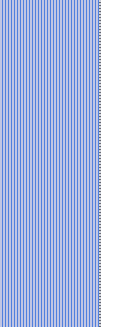

THE FLATBED SCANNER
In order to select a scanner it is important to understand your needs and usage. How often will you use the scanner, once a day, once a week or a hundred times a day? What will you be scanning, photographs, graphics, text, books, or 3 dimensional items? Where will you be using the scanner, at home, in the office, while traveling? All of these considerations become part of the selection process. The two most common image sensors that scanners use are CCD (Charge Coupled Device) and the CIS (Contact Image Sensor). CIS is a recent development targeting entry-level consumer scanners. CIS-based scanners are smaller, less costly and consume less power than the CCD based units, but the trade off is they produce slightly lower-quality images.
The color bit depth tells us how much color information can be stored per pixel. It is measured in bits per pixel or just bits. You will find the higher the bit depth, the better the quality of the image. A 24 bit scanner provides good results for most users, 36 bits is better for quality work. 48 bits or higher is required for photographers and graphic artists. When you use higher bit depths you create larger files. The flatbed scanner is good for general purpose use because it is relatively inexpensive and performs most of the functions of all the others. It can be used for scanning books and 3 dimensional items, as well as text, photographs and graphics. This scanner is well suited for the home or office, but does not travel well. The resolution can be as good as needed, but this increases its cost. At the higher resolutions this is ideal for the professional photographer and graphic artists. Most flatbed scanners require a transparency adapter to scan slides, film, x-rays and other transparent originals. The sheet fed scanner has an automatic sheet feeder and can be loaded with multiple sheets of paper, text, photos, and graphics; usually a standard size, 8 1/2 by 11, or 8 1/2 by 14. This scanner can not be used on anything thicker than a sheet of paper or card stock. You will find it in many offices where high volume scanning is required. The hand scanner is ideal for traveling; it is light weight and can input documents into the computer. It scans one document at a time. The film scanner is just for transparencies, usually 35mm slides, although other size film scanners can be found. This is used by a photographer or graphic artist who has a large number of slides or 35mm film to prepare for publication. The barcode scanner is used to input barcode data into the computer in machine readable form. The scanner is either hand held or permanently fixed while items pass in front of it. These devices are primarily used in commercial applications. Virtually all scanning devices interface with the host computer using a USB (Universal Serial Bus) connector. Some of the older scanners use a SCSI (Small Computer System Interface) connection. For these devices a SCSI adapter card is required to connect to the computer. Armed with the information supplied here go to your favorite online computer supply house and look at the scanners and flatbed scanners, availability. Select the one that will satisfy your needs and fits within your budget. If you would like to comment, or add any information to this page, please do so. Use the Contact Us form and we will respond as quickly as possible. If you would like to ask any questions, use the Questions and Answers form and an answer will be provided.
For additional information about the Flatbed Scanner. |
|||
 |